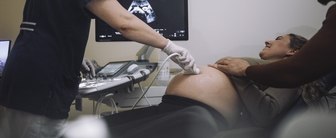After an apple visualization activity went viral earlier this year, people took to social media to share their stories of aphantasia. But what is aphantasia? Aphantasia is the lack of a mind’s eye or mental imagery. People with aphantasia can conjure the idea of an object in their mind, but are unable to imagine it. The reverse, known as hyperphantasia, is the ability to produce mental images so vivid they appear real. Only 15% of Americans have heard of the condition, according to a new YouGov survey of 2,397 Americans. More Americans under 30 have heard of aphantasia than Americans over 65, showing a generational gap in already limited knowledge. The vast majority of Americans knowing nothing about aphantasia is reflected in the limited scientific research into the two conditions.
The majority of Americans are able to visualize to some extent, though the degree to which they can drastically varies. One-third of Americans typically imagine a clear and relatively vivid mental image. And about one-third of Americans typically picture a moderately clear image. The remaining one-third of Americans is split between those on the extremes of the spectrum. Of Americans who typically see no image in their mind and only know that they are thinking of the object — which is typical of aphantasia — 76% had not heard of the condition.
Aphants — or people with aphantasia — frequently describe having a below-average long-term memory. The recent YouGov survey finds the same relationship. Of Americans who report having an above-average long-term memory, 65% have perfectly clear and vivid (28%) or clear and relatively vivid (37%) mental images — compared to just 31% of people who say they have below-average long-term memory.
The quality of a person's long-term memory is self-reported and may be skewed. A 2023 study found that belief in a person’s own mental capacities or lack thereof directly affected functioning — so believing that you have a better memory can, by itself, aid your memory.
One might assume that the lack of one internal sense might suggest the lack of another, namely the ability to hear one’s own thoughts. The vast majority of Americans (81%) have an internal monologue of some kind. 28% always have one, 24% usually have an internal monologue, and 29% sometimes have one. Of those with “below average” mental visualization, 21% have a constant internal voice. This is only a slight decrease from the percent of all U.S. adults. Notably, though, the percentage of adults who have above average visualization with a nonstop internal monologue is 43%, 22 percentage points more than those with average or below average mental visualization skills.
The ability to visualize or have an internal monologue does not appear to decrease with age. About half of adults under 30 have vivid or relatively vivid images in their mind (49%), roughly the same as the 47% of adults 65 and older. 84% of those under 30 say they have a constant internal monologue or an internal monologue with some frequency, as do 77% of adults 65 and older.
Religion is often associated with being able to see and feel a higher power that isn’t directly in the room. So, does the inability to visualize decrease engagement in religion? Surprisingly no. No matter the religion or degree of religiosity, the extent of ability to imagine clearly has no significant relationship.
— Taylor Orth contributed to this article
Related:
- Daily Survey: Responses to Noises
- More than one in ten experience mental health issues in US
- Of the five senses, a majority would miss sight the most
See the results for this YouGov poll
Methodology: The poll was conducted online among 2,394 U.S. adult citizens on two separate surveys from April 9 - 14, 2024 and April 19 - 23, 2024. A visual of the apple activity (linked above) was provided to survey takers. A random sample (stratified by gender, age, race, education, geographic region, and voter registration) was selected from the 2019 American Community Survey. The sample was weighted according to gender, age, race, education, 2020 election turnout and presidential vote, baseline party identification, and current voter registration status. Demographic weighting targets come from the 2019 American Community Survey. Baseline party identification is the respondent’s most recent answer given prior to November 1, 2022, and is weighted to the estimated distribution at that time (33% Democratic, 31% Republican). The margin of error for the overall sample is approximately 3%.
Image: Getty (We Are)












